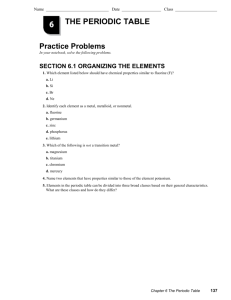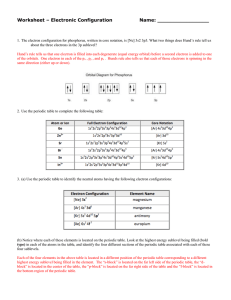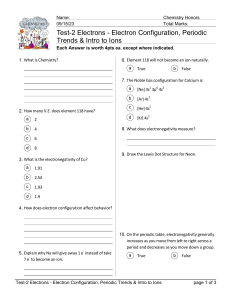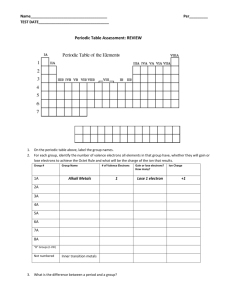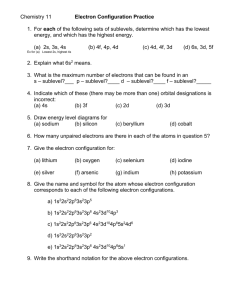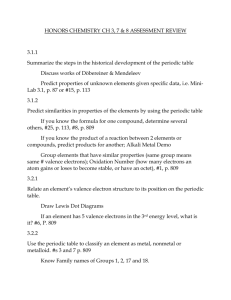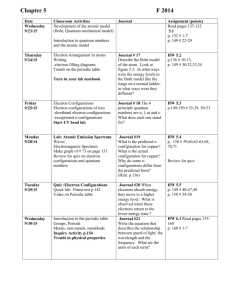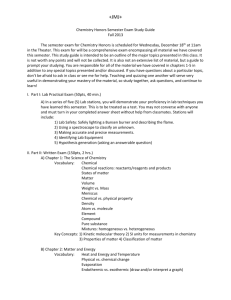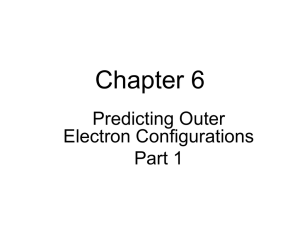Chemistry: Chemical Periodicity Practice Problems
advertisement
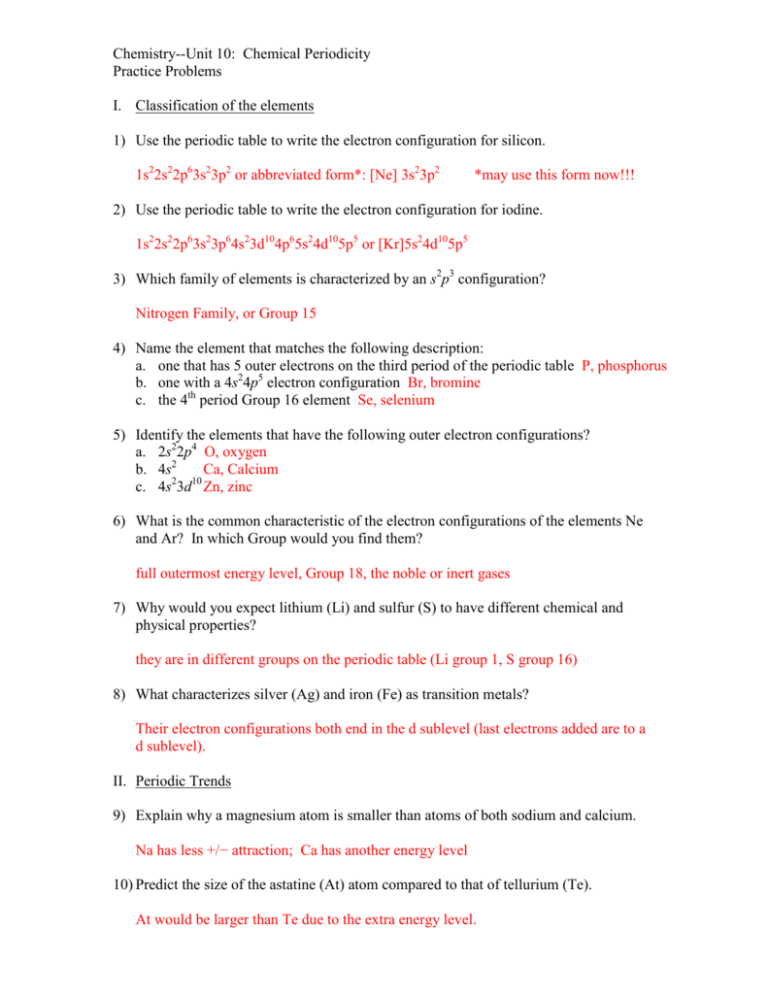
Chemistry--Unit 10: Chemical Periodicity Practice Problems I. Classification of the elements 1) Use the periodic table to write the electron configuration for silicon. 1s22s22p63s23p2 or abbreviated form*: [Ne] 3s23p2 *may use this form now!!! 2) Use the periodic table to write the electron configuration for iodine. 1s22s22p63s23p64s23d104p65s24d105p5 or [Kr]5s24d105p5 3) Which family of elements is characterized by an s2p3 configuration? Nitrogen Family, or Group 15 4) Name the element that matches the following description: a. one that has 5 outer electrons on the third period of the periodic table P, phosphorus b. one with a 4s24p5 electron configuration Br, bromine c. the 4th period Group 16 element Se, selenium 5) Identify the elements that have the following outer electron configurations? a. 2s22p4 O, oxygen b. 4s2 Ca, Calcium c. 4s23d10 Zn, zinc 6) What is the common characteristic of the electron configurations of the elements Ne and Ar? In which Group would you find them? full outermost energy level, Group 18, the noble or inert gases 7) Why would you expect lithium (Li) and sulfur (S) to have different chemical and physical properties? they are in different groups on the periodic table (Li group 1, S group 16) 8) What characterizes silver (Ag) and iron (Fe) as transition metals? Their electron configurations both end in the d sublevel (last electrons added are to a d sublevel). II. Periodic Trends 9) Explain why a magnesium atom is smaller than atoms of both sodium and calcium. Na has less +/− attraction; Ca has another energy level 10) Predict the size of the astatine (At) atom compared to that of tellurium (Te). At would be larger than Te due to the extra energy level. Chemistry--Unit 10: Chemical Periodicity Practice Problems 11) Would you expect a Cl– ion to be larger or smaller than an Mg2+ ion? Explain. + ions smaller, − ions larger, so Cl− is larger 12) Which effect on atomic size is more significant, the nuclear charge or the energy level that electrons are filling? Explain. Energy level; physically moving further away from nucleus 13) Explain why the sulfide ion (S2–) is larger than the chloride ion (Cl–). − ions larger, more – ions, even larger (+ and − more uneven) 14) Compare the ionization energy of sodium to that of potassium. Na has a greater IE than K 15) Explain the difference in ionization energy between lithium and beryllium. Be has a higher IE; greater nuclear charge holds electrons more strongly so harder to remove 16) Will the electronegativity of barium be larger or smaller than that of strontium? Ba has a smaller EN than Sr 17) What is the most likely ion for magnesium to become when it bonds with other atoms? Mg2+; least amount of energy needed to achieve s2p6 18) Arrange oxygen, fluorine, and sulfur in order of increasing electronegativity. S, O, F (be able to do this using the periodic table)
